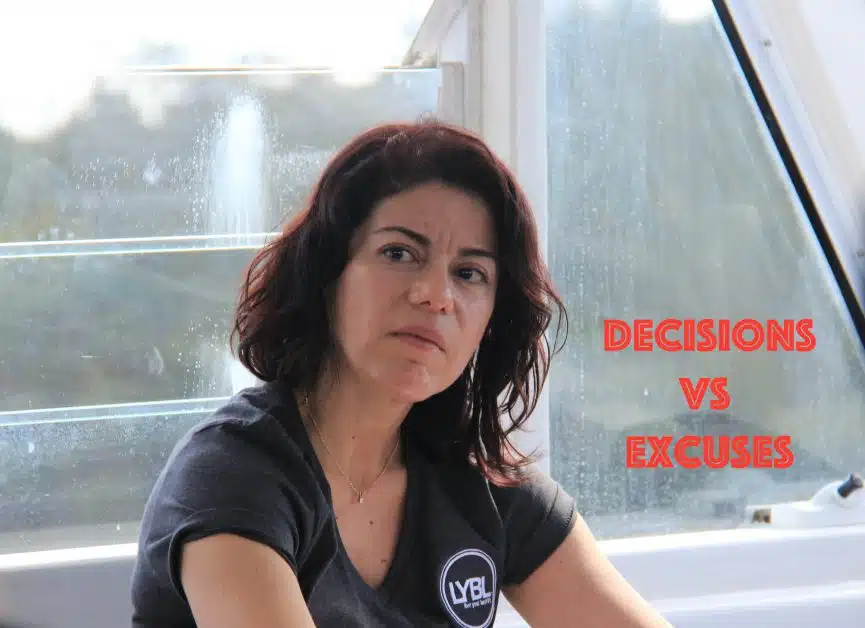In life when challenges arise, we have so many options available to us don’t we?
We can quit.
We can wait or put off.
We can ask.
We can adapt.
We can decide.
This was highlighted to me even more than ever this morning & yesterday when I was in a position to make a decision on something that was really important to me.
I began hearing myself starting to make excuses and making it mean I was failing, and as I caught myself and bought conscious awareness to what was taking place I was then able to redirect my thoughts, allowing me to run a more resourceful strategy whilst also being able to connect with the real meaning behind all I was focused on & what it actually means to me right now.
It was through this process that I realised my decision making strategy, so thought I would share it with you all.
Whilst I personally believe that quitting on something that truly matters to you and is aligned with your values & purpose shouldn’t be an option, I also believe that waiting for something positive to happen is almost equally insane.
Asking for help is a great way to go, but this option in my opinion is best implemented once we’ve exhausted our other options and the extent of our own expertise.
And it also relies on having someone to ask available to you at the time.
I believe that this leave us with the best answer – adapting or problem solving.
So, how do we do that?
I realised in these moments yesterday and today that for almost every decision, challenge or problem that comes my way this is the strategy I tend to follow.
And I tend to do this quite quickly.
1. EVALUATE
The first thing I do is look at the challenge before me and I ask myself “Is this the real problem or just a symptom of the real problem?”
2. ASK
Next I ask myself, “What is the bottom-line desired outcome that I am looking for here?”
3. CONSIDER
Then I think about solving the challenge, not making excuses. Asking myself questions such as, “What do I typically do to solve this type of problem?”, “What is the ideal way for me to solve this problem?”, then, “What can I do to achieve the intended outcome with tools, people and resources that I have available to me?”
4. ELEVATE TO PURPOSE
This to me is one of the most important parts in my opinion. This is where I ask myself why does this matter & how important is it for me right now? I tend to find that I tap into more solutions this way and it tends to then bring more value to other people’s lives in the future, not just my own.
5. ACT
Once all of the other mental steps have been completed, I’ve considered all the options, reviewed what’s in the toolbox today then I take action. No excuses, just results. I’ll find a way to solve that problem with what I have on hand rather than complaining, griping or making excuses for failing. I will do this again, and again and again if necessary until the intended outcome is achieved morally & as efficiently as possible.
If we simply take the time to look at what it is we are wanting to achieve, what tools and resources we do have on hand (not what we lack) and compare that to the ‘ideal solution’ that most people can’t move past in times of crises and pressure, we don’t need to be MacGyver to find real solutions, we can actually do this effortlessly & easily for ourselves.
And along the way we tend to learn some pretty cool things out about ourselves.
I look forward to hearing more about your problem & challenge solving victories after you’ve applied these simple decision making steps to your life.
Tags: #Business #LiveYourBestLife #LYBL #LYBLcampfire #makingdecisions #PersonalDevelopment #PersonalGrowth #Relationships

